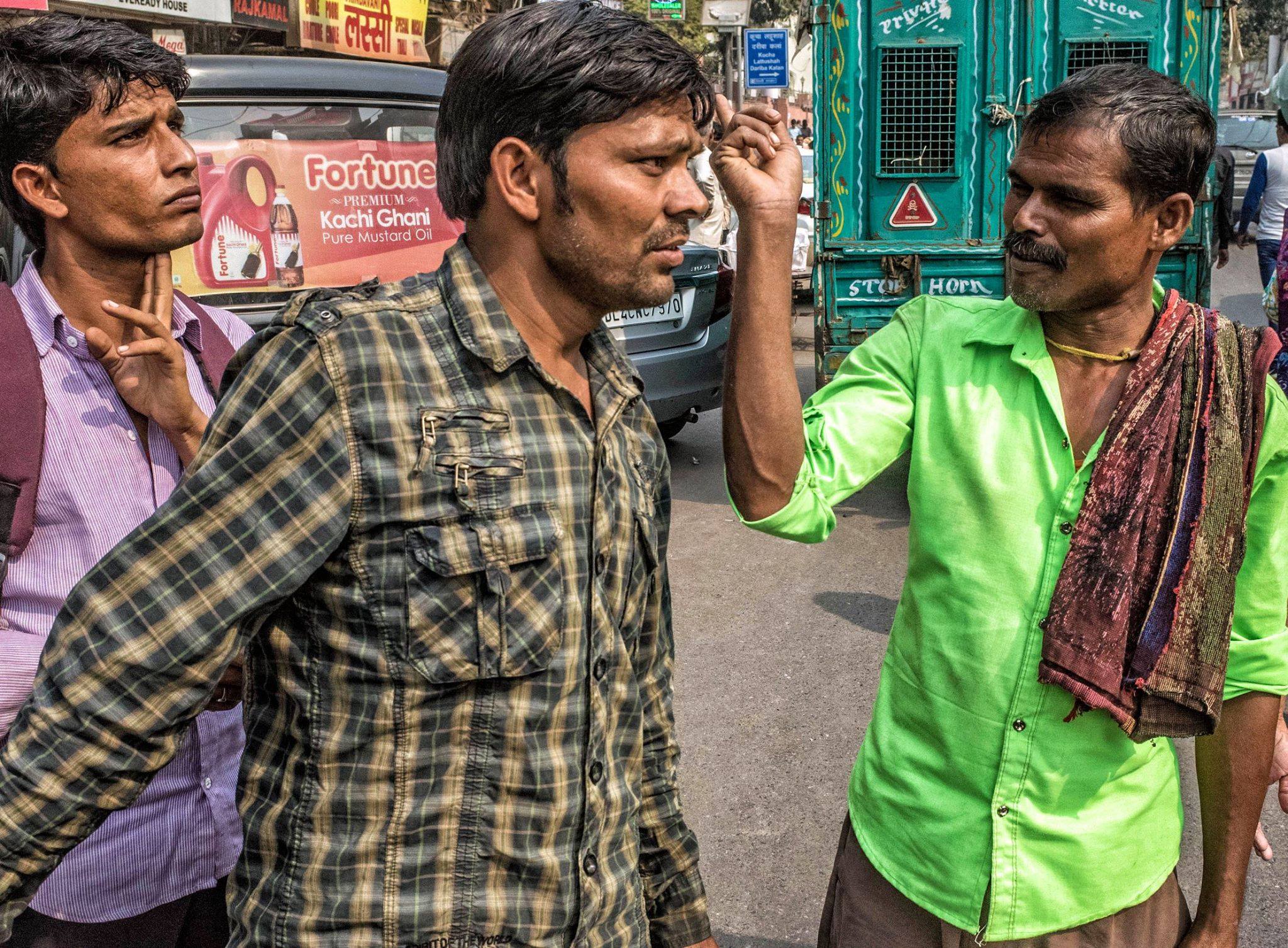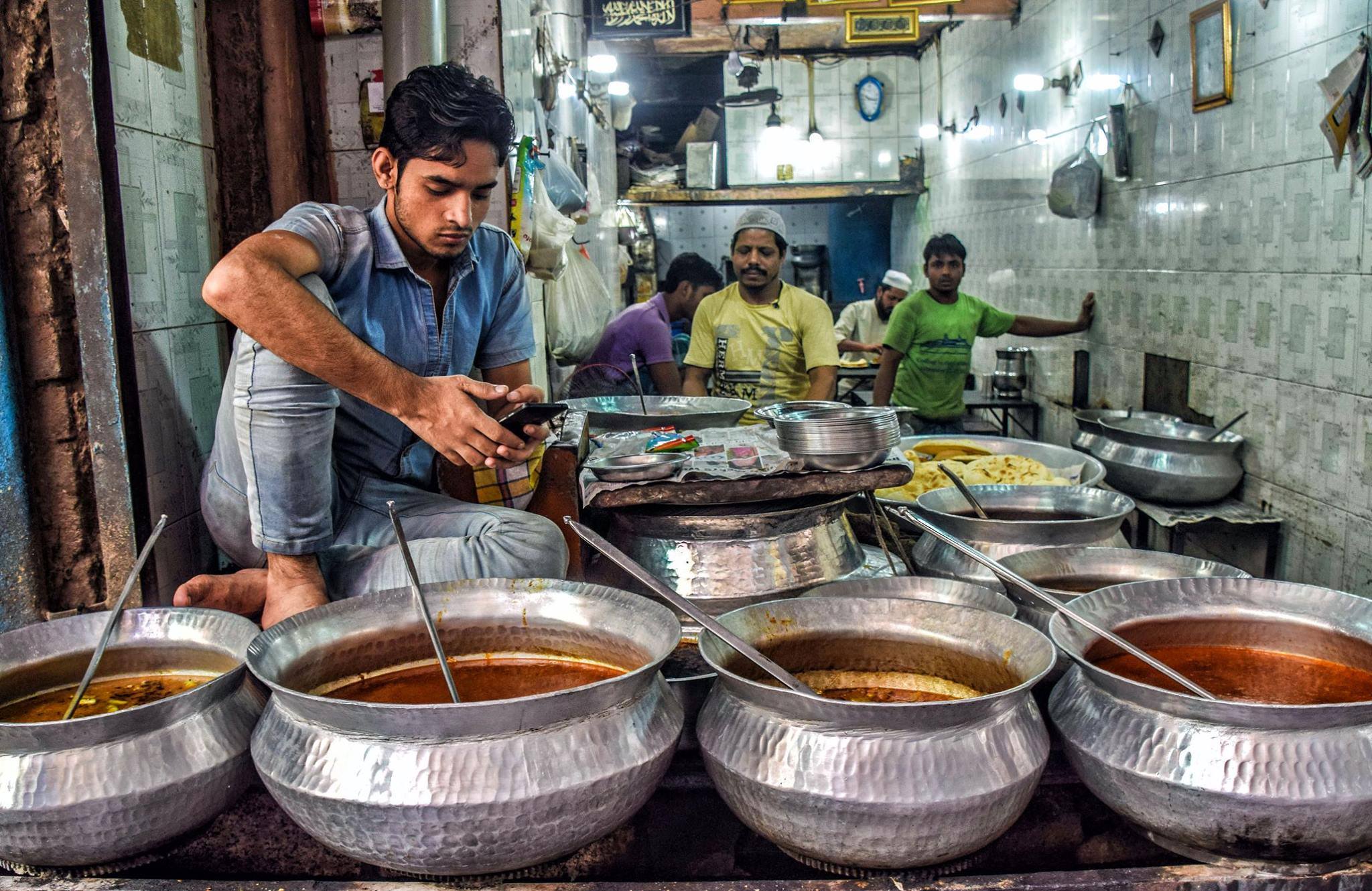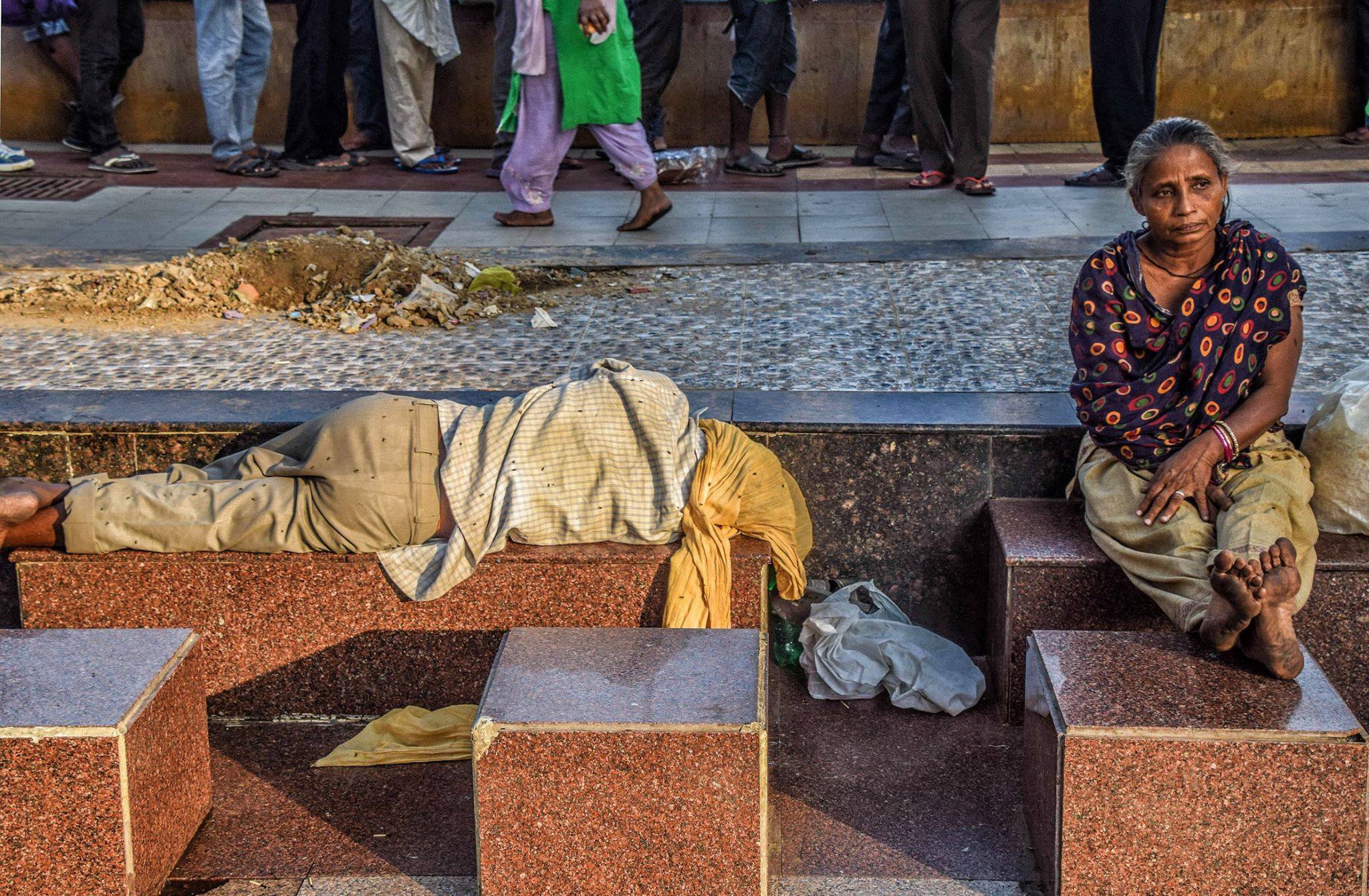Everything is possible in India
by Michael Kennedy
Report from India by Michael Kennedy
I'm retired and without respectable ambition, yet my appetite for novelty, photography and travel impels me to different parts of the globe.
Some of my friends are still wage-slaves, paying off ex-wives, sending spoiled teenage progeny to expensive colleges where they excel at academic dishonesty and major in garden-variety hedonism.
When I come in off the road, I meet with the people who matter most and try to regale them with a delightful narrative of copy and visuals that try to combine the best of Bruce Chatwin and W. Eugene Smith, like the most recent time in India.
My weeklong driver from the Punjab in Rajasthan, a splendid 41-year-old fellow with the improbable name of Vicky, met any cultural curiosities with: "Everything is possible in India.
While this outlook applies to other parts of the world, Vicky had a distinct point about his country.
In my travels from New Delhi-to-Agra-to Jaipur (the classic Golden Triangle) and back to New Delhi, and then onto Varanasi for the experience of both ongoing public cremations along the banks of the Ganges River and the sunrise ritual of the locals bathing in the ash-covered water, I experienced one example after another of both stark contrasts and an unfazed acceptance for all manner of existence. I was fascinated and repulsed by what I noticed in almost equal measure.
I went to India for the photography, and I wanted a dependable guide and a driver. I was not going to experience India as part of a bus tour with unbridled bores and ride for three hours for a quick 35-minute view of a temple that I can see in a book for free, and the obligatory shopping junket and tour of the sweatshops for pointless jewelry, scarves, carpets and just worthless knick-knacks.
To this end, my arrangement was ideal. I dropped some pretty polly for this experience, but I have no regrets. I got what I wanted – and the tour guides were very useful for me by running interference with the locals … especially the beggars, who are not all down at the heel; many are children instructed by their parents to go hustle some money. Of course there were the women who pounded on the car windows at intersections, imploring for money. I was cold about it all – for there is nothing to be done.
One simply cannot engage in any conversation with a beggar – yet I made the mistake just once, and in all these places through Southeast Asia and Southern Asia, it starts with a well-prepared script:
"Hello," the con artist said. "Where are you from?"
"I'm from nowhere," I said.
"Is it cold there? I hear it is very cold."
He thought I meant Norway. And I faded fast.
Whether in Agra – site of the Taj Mahal, or Jaipur – site of some dazzling palaces that the British Empire left largely unmolested …. except, of course, for the abundance of art work now on display in London museums … one simply must accept cows strolling down the streets, cows pissing and shitting in the streets, cows sleeping in the streets. … and then the beggars – or homeless – or derelicts; take your pick of the proper word … are just like the cows; they sit on the sidewalks, curbs, in the streets; some look shell-shocked, if not dead.
Vicky laughed cynically and cautioned that the female beggars literally "borrow" children from neighbors to panhandle at car intersections and pull the pity act.
Twenty years ago, when I spent time with my father – the Old Gringo, in his former Aztec village in the mountains of the Sierra Occidental of Mexico, I thought … as the Flecha Roja bus made the 14-hour drive from Nuevo Laredo-to-Chapulhucan … that I had seen some rock bottom, end of the world dwellings - until I arrived in Varanasi, a holy city for both Hindus and Buddhists – for this is where Prince Siddhartha made his transformation into Buddha, and gave his first public sermon.
The places along the road from the airport to Varanasi were like a drive along Bob Dylan's Desolation Row ("They're selling postcards of the hanging"), with a crazed Warren Oates for good measure in a beat-down Chevy Impala careening along the shit-splattered dirt roads with the head of Alfredo Garcia in the front seat, across a landscape that reeked of American film director Sam Peckinpah at his peak. Of course, there were the cows everywhere: pissing, shitting, sleeping, and foraging for anything halfway edible – along with feral dogs and filthy pigs. There were men urinating against walls, trees, cars, themselves and each other.
My guide in Varanasi, a local lad, seemed to say in his broken English: "It's all good."
While sitting in a wooden, one-man row boat, on the Ganges River at sunset and being close enough to shore to watch dead bodies set alight on funeral pyres was disconcerting – and a fine example of simultaneous fascination and repulsion. I could not stop viewing the spectacle – and yet I didn't want to see it. This was like the last line of Samuel Beckett's The Unnameable ... "You must go on. I can't go on. I'll go on."
Noting some discomfort on my part, the guide explained: "These people are not really dead. Their bodies have failed them, and they are moving on to other life forms. It's like they are changing clothes."
Maybe. But his explanation sounded like some bad Orange Sunshine at a Grateful Dead concert in 1970 at the Fox Theatre in St. Louis.
And then next morning, I returned to the same area to watch people bathe in the same water that … had been … is … will be … strewn with the ashes of the dead.
Within you, without you. Same as it ever was.
I wanted to spend a fair amount of time in Old Delhi, a place where you don't usually find tourists – and Delhi is divided by a river … not the Ganges, with a bridge connecting new and old. This is where the local guide came in very handy. I wanted to plunge into the thick of things, into the market areas, down the weirdly winding warrens (how's that for alliteration?). No one bothered me.
I was in-and-out of New Delhi three times during the week, always at the same hotel. I had no problem walking around the neighborhood early in the morning, I just had to mind the bums curled up asleep on the sidewalk outside the hotel. There are no cows wandering around New Delhi; across the river in the old section … yes.
I stayed in first-class hotels all along the way, but there was no reason to wander around the neighborhoods in Agra, Jaipur, or Varanasi. The areas immediately beyond these hotels were pure scum, replete with the usual trio of cow, dog and pig wandering around, and motorbike repair shops up-and-down the main road. In India – much like Vietnam … at least Hanoi, everyone gets around on a motorbike, though few people wear helmets. And it is so common to see dad driving the motorbike with two young children sandwiched between the patriarch and mom riding sidesaddle at the rear of a very small seat.
Perhaps the two strangest sights I saw all week – aside from men urinating against the walls in Agra, Jaipur and Varanasi … was a) a motorbike in traffic with two cats and a dog on the back … totally unsecured; b) a motorbike clipping along the highway with a driver and a passenger holding a struggling lamb.
Agra
Jaipur
Varanasi
Vicky explained that the men were taking the lamb to some damn temple as an offering to one of the 2,000 gods in the Hindu culture. They would slit the creature's throat and drain some blood to appease their god, then go home and devour the lamb.
Q: What year is it in India?
A: Whatever year you want.
Everything is possible in India.
“So India’s problem turns out to be the world’s problem. What happened in India has happened in God’s name. The problem’s name is God.” ― Salman Rushdie, The Satanic Verses
“India has always had a strange way with her conquerors. In defeat, she beckons them in, then slowly seduces, assimilates and transforms them.” ― William Dalrymple, White Mughals: Love and Betrayal in Eighteenth-Century India
"There are some parts of the world that, once visited, get into your heart and won't go. For me, India is such a place. When I first visited, I was stunned by the richness of the land, by its lush beauty and exotic architecture, by its ability to overload the senses with the pure, concentrated intensity of its colors, smells, tastes, and sounds... I had been seeing the world in black & white and, when brought face-to-face with India, experienced everything re-rendered in brilliant technicolor." ― Keith Bellows, National Geographic Society
























































































OLD DELHI




















VARANASI












AGRA















NEW DELHI











JAIPUR
















